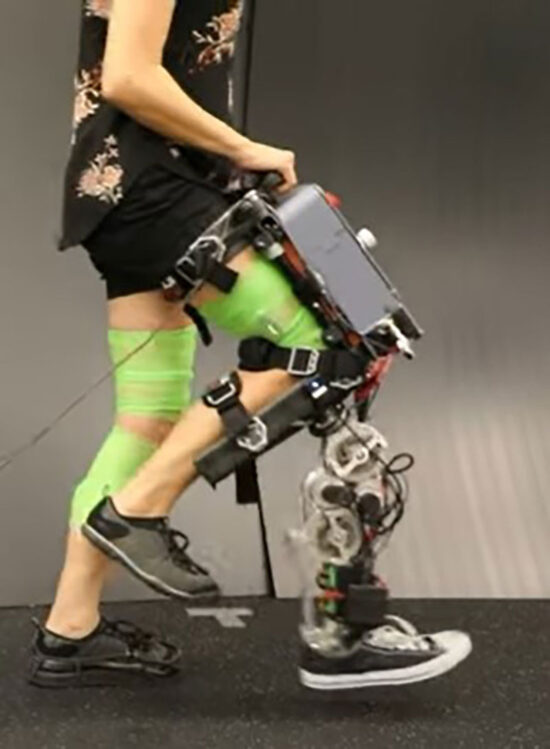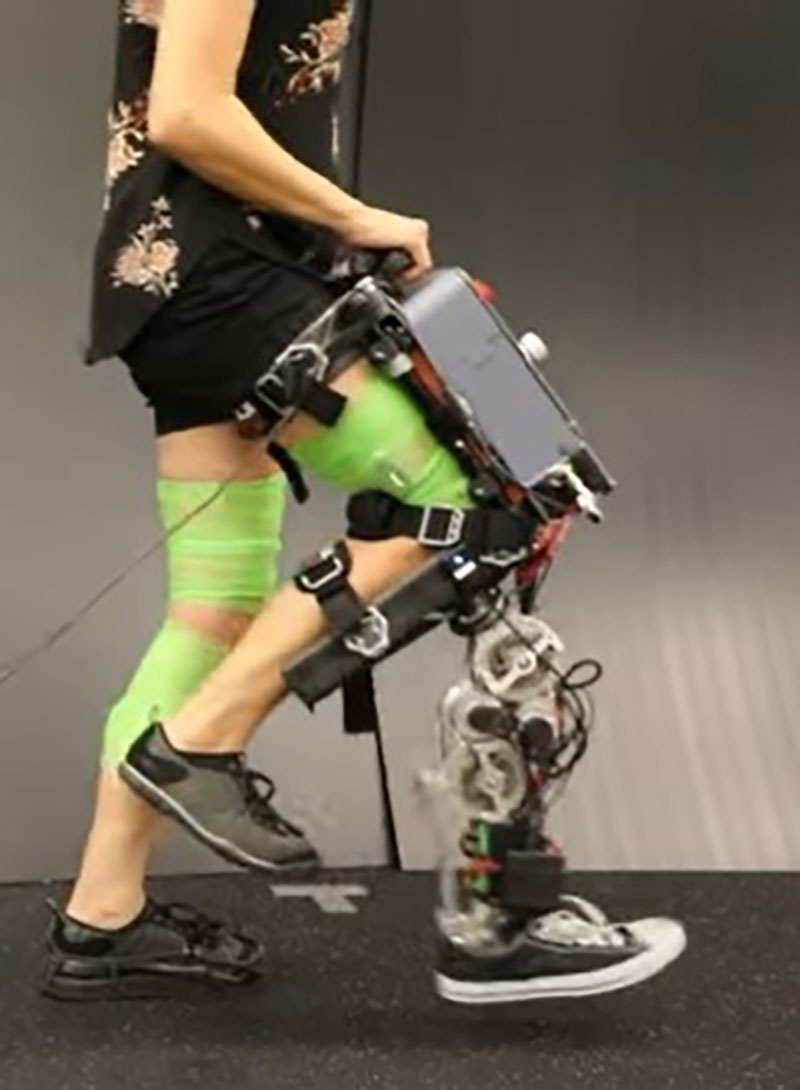 A team of graduate students in Caltech’s Advanced Mechanical Bipedal Experimental Robotics Lab (AMBER), led by Professor Aaron Ames, PhD, Bren Professor of Mechanical and Civil Engineering and Control and Dynamical Systems, is developing a new method of generating gaits for robotic assistive devices; their goal is to guarantee stability and achieve more natural locomotion for different users.
A team of graduate students in Caltech’s Advanced Mechanical Bipedal Experimental Robotics Lab (AMBER), led by Professor Aaron Ames, PhD, Bren Professor of Mechanical and Civil Engineering and Control and Dynamical Systems, is developing a new method of generating gaits for robotic assistive devices; their goal is to guarantee stability and achieve more natural locomotion for different users.
Their work combines hybrid zero dynamics (HZD)—a mathematical framework for generating stable locomotion—with a musculoskeletal model to control a robotic assistive device for walking. The musculoskeletal model is a computational tool to noninvasively measure the relationship between muscle force and joint contact force. HZD is currently used to create stable walking gaits for bipedal robots, and the muscle model represents how much a muscle stretches or contracts with a given joint configuration.
The team demonstrated its approach on a battery-operated, motorized prosthetic leg. The battery powers the motors, which turn the joints. The motor movement is dictated by the mathematical algorithm developed by the researchers.
“The muscle activity pattern of a human walking without the prosthetic is what we want to get closer to,” said Rachel Gehlhar, a graduate student in mechanical and civil engineering. Directly embedding musculoskeletal models into the optimization problem—the algorithm ultimately producing gaits for the prosthesis—provides a foundation for generating gaits that can feel more natural.
One surprising discovery was that the combination of HZD and the muscle models generated desired walking gaits faster than had been expected. Forcing the robotic model to follow the patterns of muscle-tendon relationships adds further constraints to the gait-generation optimization problem, so one might expect the problem to be more difficult to solve. But with these additional constraints, a stable walking gait developed after fewer iterations of the optimization problem.
This work helps bridge the gap between methods that use algorithms to produce desired walking motion and the field of biomechanics. The resulting collaboration brings the AMBER lab a step closer to translating natural motion to a robotic assistive device like a prosthesis, with potential applications in full body exoskeleton devices for people with paraplegia.






